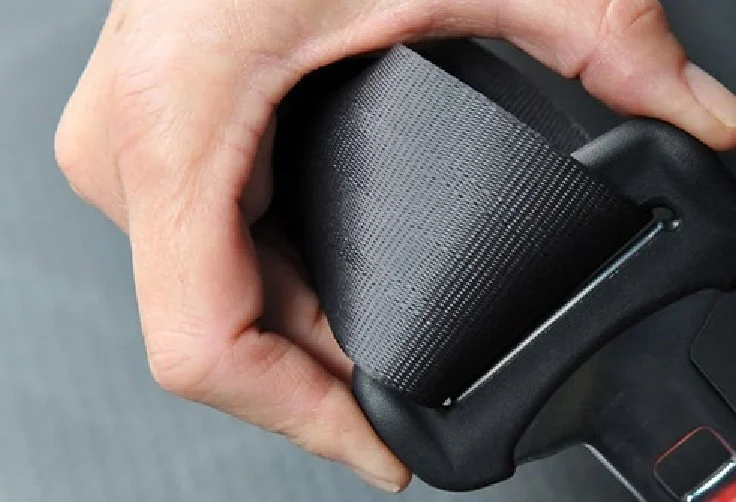Seat belts help to distribute crash forces over the more vital bony parts of your body, like the rib cage and pelvis. They also prevent you from being ejected from your vehicle in a crash, which is almost always fatal.
If your seat belts aren’t retracting correctly, you should ensure nothing is jammed in the mechanism. If it isn’t, you can try to adjust the tensioner.
Prevents Injuries
Seat belts prevent injuries in a car accident by spreading the force of impact over a more expansive body area. They also keep the driver in their seat, reducing the likelihood of being injured by “hostile” objects in the vehicle, like the steering wheel, dashboard, or windshield. In addition, seat belts minimize injuries such as facial fractures, broken ribs, internal organ damage, and abdominal lacerations.
Moreover, seat belts prevent ejection from the vehicle, which is a leading cause of fatal car accidents. Studies have shown that a person is more than three times as likely to survive wearing a seat belt.
The type of injury sustained depends on where the seat belt is positioned on the body. Seat belts that wrap around the lap (lap belts) can cause injuries such as rib or sternum injury, and seat belts across the shoulders (shoulder belts) can cause neck injury and soft tissue damage.
If you are involved in a car accident, have your seat belt repaired promptly? Injuries that are not properly treated can lead to costly medical expenses. Contact a car accident lawyer to discuss your case and learn how much you may be entitled to receive for your damages from the responsible party’s auto liability insurance.
Reduces Risk of Infection
Seatbelts reduce the risk of death or severe injury from a car crash by preventing the back of the head and chest from crashing against the front seat occupants. The seat belt light stays on after fastening is a helpful reminder. They also protect passengers from being thrown forward during a collision, which can cause internal injuries such as fractures and lacerations. These injuries are more common among people not wearing seatbelts, especially those in the rear seats of vehicles.
For example, the National Highway Traffic Safety Administration said more than 18,000 people died in car crashes in 2017 because they were not wearing seat belts. In addition, 2.2 million people were treated in emergency rooms due to vehicle-related injuries in the same year.
The argument that vaccines should be made compulsory has been compared with that of seat belts on the basis that both help protect third parties (the driver and passengers). However, the two arguments are fundamentally different. In the case of seat belts, effective protection of third parties does not depend on whether or not other occupants in the vehicle wear their seatbelts, which is quite a contrast with the situation regarding vaccines, where herd immunity needs to be achieved to be effective (De Miguel Beriainand Rueda 2020, 2021).
When seat belts are worn correctly, they can become effective and dangerous. This is why proper usage is significant to prevent injuries and ensure that seatbelts can provide the full range of benefits they offer. This is why it is crucial to maintain your seatbelts and have them repaired if they show any signs of wear or tear.
Prevents Organ Damage
Although seat belts transmit physical force during an accident, they often cause less severe injuries than a person would experience without one. The belt acts as a fulcrum, keeping your body stationary while it moves above and below. In minor accidents, the impact can cause skin abrasions and bruises. Still, in major ones, it can damage organs such as the liver and intestines, requiring surgery to remove the injured tissue. Seatbelt repairs can prevent these injuries by ensuring the latches and tension detectors work correctly. This is particularly important in newer vehicles with automated seatbelts that can be difficult to operate manually.
Prevents Death
One of the most important things to remember about seat belts is that they can save your life. Despite advances in car safety technology, including airbags and electronic stability control systems, people who are not restrained are more than twice as likely to die in a crash than those who wear seat belts.
This is because unrestrained occupants become deadly projectiles during crashes, either hitting the driver or passengers or being thrown through the windshield. The most common fatal injury for front-seat occupants is head trauma, which may be caused by slamming into the steering wheel or dashboard, being thrown into or through the vehicle body, or being ejected.
Fortunately, seat belt use is rising thanks to laws, education, and technological advancements. However, there are still many people who don’t wear seat belts. The good news is that it only takes a few seconds to buckle up, and doing so reduces the risk of death by up to 45% for those in passenger cars and 60% for people in pickup trucks. Last year, nearly half of all pickup drivers and passengers killed in Texas were not wearing seat belts.
